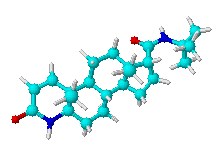We all have so-called climate change targets to meet. So, you’d think we would be doing everything we can to cut carbon emissions, conserve energy etc.
It sometimes looks like we’re heading in the “right” direction – wind farms are sprouting up all over the place and forests are being harvested for biomass fuel rather than our digging away at ancient fossil hydrocarbons…but it doesn’t really add up really does it?
How much energy does it take to build one of those turbines and how long do they last? Ditto plant and managing supposedly “sustainable” forests for biomass?
Couple that announcements about new airports and runways that will multiply passenger capacity and one has to wonder…
The BBC today reports that Prince Charless sees climate change as the “greatest challenge to face man”…he’s such an expert, of course. Oh, and he’s worried about bird flu.
 Premier molecular modeller Stephan Logan has produced for us a timely reminder of the chemical structure of Tamiflu, the antiviral flu drug. You can order the necessary components to build the Molecular Model of Oseltamivir (Tamiflu) and other molecules from Stephan’s site. Perfect for that avian flu lecture!
Premier molecular modeller Stephan Logan has produced for us a timely reminder of the chemical structure of Tamiflu, the antiviral flu drug. You can order the necessary components to build the Molecular Model of Oseltamivir (Tamiflu) and other molecules from Stephan’s site. Perfect for that avian flu lecture!
 In his otherwise intriguing book, Digital Fortress ($7.99 in paperback from Amazon US), author Dan Brown makes several schoolboy errors. For instance, top of page 69 he says that, “Computer viruses were as varied as bacterial viruses…”
In his otherwise intriguing book, Digital Fortress ($7.99 in paperback from Amazon US), author Dan Brown makes several schoolboy errors. For instance, top of page 69 he says that, “Computer viruses were as varied as bacterial viruses…”